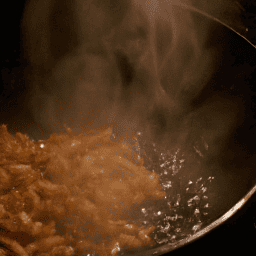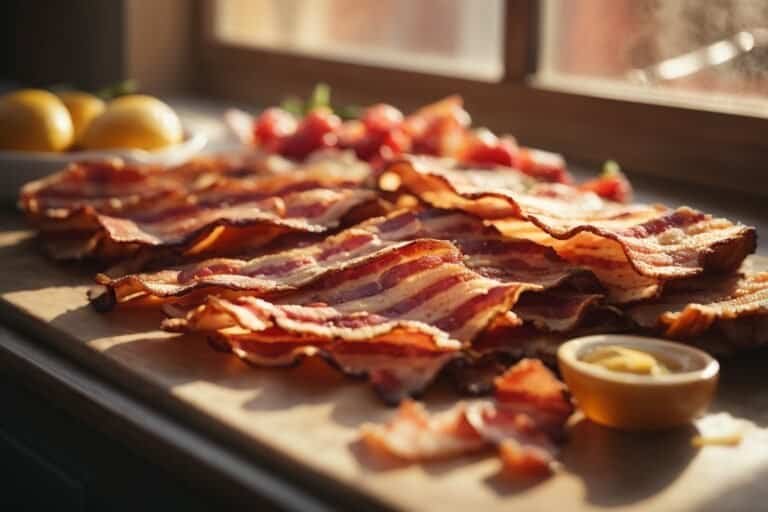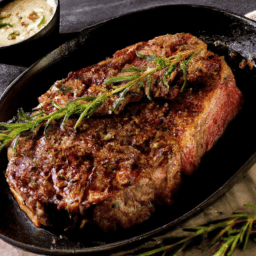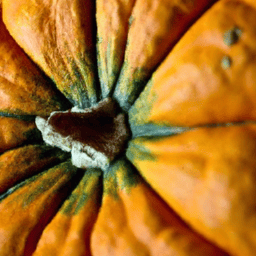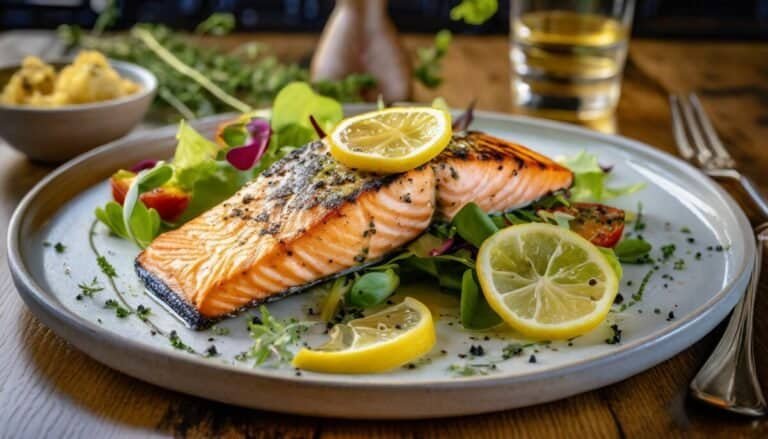Combination Cooking Methods
If you’ve ever wondered how top chefs create those mouth-watering dishes with perfectly cooked meats and vegetables, then look no further than combination cooking methods. This innovative culinary technique involves using multiple cooking methods in one dish to achieve the ideal texture, flavor, and presentation. Whether it’s searing and braising, roasting and smoking, or sautéing and steaming, the possibilities are endless when it comes to combining cooking methods. With this approach, you can elevate your cooking skills to new heights and impress your friends and family with restaurant-quality meals right in your own kitchen. So, get ready to embark on a culinary adventure as we explore the world of combination cooking methods.
Understanding Combination Cooking Methods
Combination cooking refers to the method of cooking that involves two or more cooking techniques to achieve the desired result. It is a versatile approach that combines the benefits of different cooking methods to create flavorful and tender dishes. By understanding combination cooking methods, you can elevate your culinary skills and create restaurant-quality meals right in your own kitchen.
Importance of Learning Combination Cooking Methods
Learning combination cooking methods is essential for any aspiring chef or home cook. It allows you to maximize the flavors and textures of your dishes, resulting in more delicious and satisfying meals. Combination cooking techniques are particularly useful when dealing with tougher or less tender cuts of meat, as they help break down the connective tissues and render them tender and juicy.
By expanding your knowledge of combination cooking methods, you can also broaden your recipe repertoire. It opens up a world of possibilities and allows you to experiment with different flavors and ingredients. Plus, mastering combination cooking methods enables you to make the most of your cooking equipment, saving you time and effort in the kitchen.
Advantages of Combination Cooking Methods
There are several advantages to using combination cooking methods, including:
-
Enhanced Flavors: By combining different cooking techniques, you can layer flavors and create more complex and well-rounded dishes. For example, braising a piece of meat before searing it on the grill adds depth and richness to the final product.
-
Tender and Juicy Texture: Combination cooking methods, such as braising or stewing, help break down tough proteins and collagen, resulting in tender and juicy meat. The slow and gentle cooking process allows flavors to infuse and ensures a moist and succulent texture.
-
Versatility: Combination cooking methods can be applied to a wide range of ingredients, from meat and poultry to vegetables and grains. This versatility allows you to explore different cuisines and experiment with various flavors and textures.
-
Time and Energy Efficiency: Utilizing combination cooking techniques can save you time and energy in the kitchen. Once you’ve set up your dish, it can simmer, braise, or roast slowly, allowing you to focus on other tasks or simply relax.
Now that we understand the importance and advantages of combination cooking methods, let’s explore some of the popular techniques in more detail.
Popular Combination Cooking Methods
Braising
Braising is a combination cooking method that involves searing meat or vegetables at high heat, followed by slow cooking in a liquid. This technique is ideal for tougher cuts of meat, as the low and slow cooking process helps tenderize them. The initial sear gives the dish a rich caramelized flavor, while the slow cooking in liquid allows the flavors to infuse and the meat to become tender.
Stewing
Stewing is similar to braising but typically involves cutting meat or vegetables into smaller, uniform pieces and cooking them in a simmering liquid. This method is perfect for ingredients that benefit from longer cooking times, such as stews, soups, and curries. The low and slow heat allows the flavors to meld together, resulting in a hearty and flavorful dish.
Roasting
Roasting is a dry heat cooking method that is often combined with other techniques, such as searing or braising. It involves cooking food, usually meat or vegetables, in an oven at high temperatures. This method is excellent for caramelizing the exterior of the food, creating a crispy crust while retaining moisture on the inside. Roasting can be used to cook a wide range of ingredients, from whole chickens to root vegetables.
Grilling
Grilling is a popular combination cooking method that involves cooking food over an open flame or a hot grill. It combines direct heat with the smoky flavor of the grill, resulting in a charred exterior and a juicy interior. Grilling is perfect for cooking meats, poultry, seafood, and even vegetables. It imparts a distinct flavor that cannot be replicated by other cooking methods.
Now that we’ve explored the popular combination cooking methods, let’s dive into each technique in more detail.
Braising as Combination Cooking Method
Elements of Braising
Braising consists of several key elements that contribute to its success. These elements include:
-
Searing: The initial step in braising involves searing the meat or vegetables in a hot pan or Dutch oven. Searing helps develop a rich caramelized crust and adds depth of flavor to the dish.
-
Liquid: Braising requires the use of liquid, such as broth, wine, or a combination of both. The liquid helps to keep the meat moist and creates a flavorful cooking environment.
-
Low and Slow Cooking: The dish is cooked at a low temperature, usually in a covered pot or Dutch oven. This slow cooking process allows the meat to become tender and infuses it with the flavors of the liquid and other ingredients.
Steps Involved in Braising
To braise a dish, follow these steps:
-
Season the meat or vegetables with salt and pepper or other desired spices.
-
Heat a pan or Dutch oven over medium-high heat and add oil.
-
Sear the meat or vegetables on all sides until browned. This step adds flavor and texture to the final dish.
-
Remove the meat or vegetables from the pan and set aside.
-
In the same pan, add aromatics such as onions, garlic, and herbs. Cook until fragrant and slightly softened.
-
Deglaze the pan with liquid, such as broth, wine, or a combination of both. Scrape the bottom of the pan to release any browned bits (known as fond) for added flavor.
-
Return the meat or vegetables to the pan and submerge them in the liquid.
-
Cover the pan or Dutch oven and transfer it to the oven or continue cooking on the stovetop over low heat, depending on the recipe.
-
Cook for the specified time until the meat or vegetables are tender and fully cooked.
Tips for Perfect Braising
To achieve the best results when braising, keep the following tips in mind:
-
Choose the Right Cut: Braising works best with tough cuts of meat that have more collagen, such as beef chuck, pork shoulder, or lamb shanks. These cuts benefit from the slow cooking process, as it breaks down the connective tissues and results in tender meat.
-
Brown the Meat: Take the time to properly brown the meat before braising. This step enhances the flavor and creates a delicious caramelized crust.
-
Use Flavorful Liquid: The liquid used in braising contributes significantly to the final taste of the dish. Choose flavorful liquids like broth, wine, or a combination of both to enhance the flavors.
-
Don’t Overcook: While braising requires a longer cooking time, it’s essential not to overcook the meat or vegetables. Keep a close eye on the dish and check for tenderness periodically.
Recipes Best Suited for Braising
Braising is a versatile cooking method that can be used for various ingredients. Here are a few popular recipes that are well-suited for braising:
- Beef Bourguignon
- Coq au Vin
- Braised Short Ribs
- Braised Lamb Shanks
- Braised Chicken Thighs with Vegetables
By mastering the art of braising, you can create tender and flavorful dishes that are sure to impress your family and friends.
Stewing as Combination Cooking Method
Purpose of Stewing
Stewing is a combination cooking method that involves cooking ingredients, such as meat, vegetables, or legumes, in a simmering liquid for an extended period. The purpose of stewing is to break down the proteins and connective tissues in the ingredients, resulting in a tender and flavorful dish. Stewing is particularly useful for tougher cuts of meat or ingredients that benefit from long, slow cooking.
Preparation Techniques for Stewing
To prepare a stew, follow these steps:
-
Start by preparing and cutting the ingredients into uniform pieces. This ensures even cooking and consistent texture throughout the dish.
-
Heat oil or butter in a large pot or Dutch oven over medium-high heat.
-
Add the meat or vegetables to the pot and cook until browned. This step adds flavor to the dish.
-
Remove the browned meat or vegetables from the pot and set aside.
-
In the same pot, add aromatics such as onions, garlic, and herbs. Sauté until fragrant and slightly softened.
-
Deglaze the pot with liquid, such as broth, wine, or a combination of both. Scrape the bottom of the pot to release any browned bits (known as fond) for added flavor.
-
Return the browned meat or vegetables to the pot and add any additional liquid (if needed) to cover the ingredients.
-
Bring the liquid to a boil, then reduce the heat to a simmer.
-
Cover the pot and let the stew simmer on low heat for the specified time, stirring occasionally.
Tips to Make Perfect Stew
Consider the following tips to make a perfect stew:
-
Choose the Right Cut: Stewing is ideal for tougher cuts of meat that have more connective tissues, such as beef chuck or pork shoulder. These cuts benefit from the slow cooking process, becoming tender and flavorful.
-
Brown the Meat: Just like with braising, browning the meat before stewing enhances the flavor and creates a nice caramelized surface.
-
Utilize Flavorful Ingredients: To enhance the taste of your stew, add aromatic vegetables, such as onions, garlic, and herbs. These ingredients infuse the dish with their flavors during the long cooking process.
-
Liquid to Ingredient Ratio: Ensure you have enough liquid to cover the ingredients, but not too much that it becomes a soup. The liquid will reduce during cooking and intensify in flavor.
Stew-Friendly Recipes
Stewing is a versatile technique that can be used to create a variety of delicious dishes. Here are a few stew-friendly recipes to try:
- Beef Stew with Root Vegetables
- Chicken and Dumplings
- Lamb Stew with Herbs
- Vegetarian Bean Stew
- Seafood Gumbo
By mastering the art of stewing, you can create hearty and comforting dishes that are perfect for cooler weather or a satisfying meal any time of the year.
Roasting as Combination Cooking Method
Understanding the Basics of Roasting
Roasting is a cooking method that involves exposing food to dry heat, usually in an oven. It is a form of dry heat cooking that is often combined with other techniques to achieve desired results. Roasting is commonly associated with cooking meats and poultry, but it can also be applied to vegetables, fruits, and even grains.
The dry heat of roasting promotes browning and caramelization, resulting in a flavorful crust while maintaining the food’s moisture. This combination cooking method creates dishes that are succulent on the inside and have a crispy exterior.
How to Perfect Your Roasting Skills
To perfect your roasting skills, follow these steps:
-
Preheat the oven: Make sure your oven is preheated to the appropriate temperature as specified in your recipe. Preheating ensures even cooking and helps to achieve the desired texture and flavor.
-
Prepare the ingredients: Season the food with salt, pepper, herbs, spices, or marinades, as desired. This step enhances the flavor of the final dish.
-
Use a roasting pan: Place the food on a rack in a roasting pan to elevate it, allowing hot air to circulate evenly around the food. The rack helps to prevent the food from sitting in its juices and becoming soggy.
-
Baste or add fat: Basting involves using a brush or spoon to periodically coat the food with melted fat or its own juices. This helps to keep the food moist and adds flavor to the final dish. Alternatively, you can add fat, such as butter or oil, directly to the food before roasting.
-
Monitor the cooking time: Keep a close eye on the cooking time and temperature. Use a meat thermometer to ensure the food reaches the desired internal temperature. Overcooking can result in dry and tough textures, while undercooking can lead to raw or unsafe food.
-
Let it rest: Once the food is cooked to perfection, remove it from the oven and let it rest for a few minutes before serving. Resting allows the juices to redistribute and the flavors to develop fully.
Keys to Perfect Roasted Food
To achieve perfectly roasted food, remember these key tips:
-
Temperature Control: Preheating the oven and maintaining the correct temperature is crucial for even cooking and achieving the desired texture and flavor.
-
Seasoning: Properly season the food before roasting, whether it’s with salt, pepper, herbs, or spices. Seasoning enhances the overall taste of the dish.
-
Utilize a Rack or Basting: Using a roasting rack elevates the food, allowing hot air to circulate evenly around it. Basting with melted fat or its own juices helps retain moisture and enhances flavor.
-
Cooking Time and Resting: Monitor the cooking time closely to avoid over or undercooking. Let the food rest after cooking to allow the juices to redistribute, resulting in a more tender and flavorful experience.
Choosing the Right Foods to Roast
Roasting can be applied to a wide variety of foods, allowing you to explore different flavors and textures. Here are some ingredients that are well-suited for roasting:
- Roast Chicken
- Roast Beef
- Roasted Vegetables (e.g., potatoes, carrots, cauliflower)
- Roasted Salmon
- Roasted Tomatoes
By understanding the basics of roasting and applying these techniques to the appropriate ingredients, you can create mouthwatering dishes with crispy exteriors and juicy interiors.
Grilling as Combination Cooking Method
Introduction to Grilling
Grilling is a combination cooking method that involves cooking food over an open flame or a hot grill. It is a popular outdoor cooking technique that is loved by many for its distinct smoky flavor and ability to create perfectly charred and juicy dishes.
Grilling can be done using various types of grills, such as charcoal grills, gas grills, or electric grills. Each type of grill offers a unique cooking experience and requires different techniques. Regardless of the type of grill used, grilling is a versatile cooking method suitable for a wide range of ingredients, including meat, poultry, seafood, and vegetables.
Methods Involved in Grilling
Grilling involves two primary methods: direct grilling and indirect grilling.
-
Direct Grilling: In direct grilling, the food is placed directly above the heat source. This method is ideal for thin cuts of meat or ingredients that cook quickly, such as burgers, steaks, and kebabs. Direct grilling provides high heat and creates beautiful grill marks on the food.
-
Indirect Grilling: Indirect grilling involves cooking food next to, rather than directly above, the heat source. This method is suitable for larger cuts of meat or ingredients that require longer cooking times, such as whole chickens or racks of ribs. Indirect grilling allows for slower, more even cooking and prevents the food from burning.
Techniques to Improve Grilling
To improve your grilling skills and achieve excellent results, consider the following techniques:
-
Preheating: Preheat your grill before cooking to ensure even heat distribution and prevent the food from sticking to the grates. Preheating also helps to achieve beautiful grill marks and that desired smoky flavor.
-
Proper Seasoning: Season the food before grilling with salt, pepper, herbs, spices, or marinades. This step enhances the flavor and creates a delicious crust on the exterior.
-
Oil the Grates: Before placing the food on the grill, make sure to oil the grates to prevent sticking and ensure easy flipping. You can apply oil directly to the grates using a brush or by rubbing oil onto the food itself.
-
Timing and Temperature: Pay attention to the cooking time and temperature. Use a meat thermometer to check the internal temperature of the food and ensure it reaches the appropriate level of doneness.
Recipes Ideal for Grilling
Grilling offers endless possibilities for creating delicious and flavorful dishes. Here are a few recipes to inspire your next grilling adventure:
- Grilled Steak with Chimichurri Sauce
- Grilled Chicken Skewers with Lemon and Herbs
- Grilled Shrimp Tacos with Mango Salsa
- Grilled Vegetable Kabobs
- Grilled Pineapple with Cinnamon and Honey
By applying these grilling techniques and exploring different recipes, you can become a master of the grill and impress your guests with mouthwatering dishes.
In-depth Analysis of Combination Cooking Methods
Physiological Changes in Food during Cooking
Combination cooking methods bring about various physiological changes in food, resulting in different textures and flavors. These changes occur due to the application of heat, moisture, and time during the cooking process.
-
Denaturation of Proteins: Proteins in food undergo denaturation when exposed to heat. This denaturation causes the proteins to unwind and bond together, resulting in the coagulation of the food. For example, meat becomes tender as the heat helps to break down the collagen and muscle fibers.
-
Starch Gelatinization: Starchy foods, such as potatoes and grains, undergo gelatinization during cooking. The heat and moisture cause the starch granules to swell and absorb liquid, resulting in a softer texture. This process is often seen in dishes like mashed potatoes or risotto.
-
Maillard Reaction: The Maillard reaction occurs when proteins and carbohydrates undergo a chemical reaction due to heat. This reaction creates the characteristic brown color and rich flavors found in roasted meats or grilled vegetables.
-
Moisture Loss: During cooking, moisture evaporates from the food, concentrating flavors and causing the food to shrink. This loss of moisture is desirable in some cases, such as when roasting meat to achieve a crispy exterior and juicy interior.
Variation in Flavor Developed during Combination Cooking
Combination cooking methods produce complex and layered flavors in food. By utilizing different techniques, you can create dishes that are deeply flavorful and satisfying.
-
Caramelization: Techniques like roasting, grilling, or searing contribute to the development of caramelized flavors. The browning of sugars creates a rich and slightly sweet taste in dishes like caramelized onions or roasted vegetables.
-
Reduction of Liquids: Combination cooking often involves simmering liquids for extended periods. This process allows the flavors to concentrate as the liquid reduces, resulting in a more robust and intense taste.
-
Infusion of Flavors: Braising and stewing methods infuse flavors into the food by allowing it to simmer in liquid for an extended time. This process allows the ingredients to absorb the flavors of the aromatics, herbs, and spices, resulting in a flavorful and well-rounded dish.
-
Smoky and Grilled Flavors: Grilling imparts a distinct smoky flavor to food, creating a delicious charred taste. Grilled meats and vegetables develop a rich and complex flavor profile that cannot be achieved through other cooking methods.
Why Food Texture Changes in Combination Cooking
Combination cooking methods also play a significant role in altering the texture of food, providing a more enjoyable eating experience.
-
Tenderizing: Techniques like braising and stewing break down tough connective tissues in meat, resulting in a tender and more palatable texture. The slow cooking process allows collagen to convert into gelatin, resulting in a melt-in-your-mouth experience.
-
Crispy and Crunchy: Roasting and grilling create a desirable crispy and crunchy texture on the exterior of food. The dry heat and high temperatures cause the surfaces to dry out, resulting in a contrast of textures between the crispy exterior and tender interior.
-
Soft and Creamy: Combination cooking can also produce soft and creamy textures, particularly in ingredients like starchy vegetables or legumes. When cooked for longer periods, these ingredients break down and become soft and creamy in dishes like soups, stews, or lentil curries.
-
Moist and Juicy: Combination cooking methods, such as braising and stewing, help to retain moisture in dishes, resulting in a juicy and succulent texture. The slow, moist cooking environment prevents the food from drying out, maintaining its natural juices.
Understanding the physiological changes and texture variations that occur during combination cooking will help you make informed decisions when selecting ingredients and techniques for your recipes.
Kitchen Equipment for Combination Cooking Methods
Dutch Ovens and Their Role in Combination Cooking
Dutch ovens are versatile and essential kitchen equipment for combination cooking methods, especially braising and stewing. These heavy-bottomed pots with tight-fitting lids are perfect for slow cooking dishes due to their excellent heat retention and even heat distribution.
The heavy construction of Dutch ovens allows for gentle, steady heat, which is essential in combination cooking techniques. The thick walls prevent hot spots and ensure consistent cooking throughout the dish. Dutch ovens can be used on both stovetops and ovens, making them incredibly versatile for various cooking methods.
When braising or stewing, Dutch ovens provide an ideal cooking environment. The tight-fitting lid traps moisture, helping to keep the ingredients moist and preventing excessive evaporation. The oven-safe design allows for easy transfer between stovetop and oven, making it convenient for recipes that require a two-step cooking process.
Importance of Grills in Combination Cooking
Grills are a fundamental tool for combination cooking, particularly for grilling and roasting techniques. Whether you prefer a charcoal grill, gas grill, or electric grill, having a grill in your kitchen arsenal opens up a world of culinary possibilities.
Grills provide the direct heat necessary for achieving those beloved grill marks and smoky flavors. Grilling allows for the quick cooking of thin cuts of meat, such as steaks, burgers, or kebabs. The high heat helps to sear the exterior, sealing in juices and creating a delicious crust.
Additionally, grills can be used for indirect grilling, which is perfect for larger cuts of meat or ingredients that require longer cooking times. By utilizing indirect heat, you can achieve slow and even cooking, resulting in tender and juicy dishes.
Grills offer versatility and the opportunity to experiment with flavors. You can grill a wide variety of ingredients, including vegetables, seafood, and even fruits. The smoky and charred flavors imparted by grilling elevate the taste of the food and add an exciting dimension to any dish.
Use of Steaming Baskets in Combination Cooking
Steaming baskets are a valuable tool in combination cooking, especially when steaming is combined with other cooking methods like roasting or braising. Steaming is a gentle cooking technique that helps retain the natural flavors and nutrients of the ingredients, making it an excellent choice for vegetables, seafood, and dumplings.
Steaming baskets allow for the even distribution of steam around the food, ensuring effective and uniform cooking. They can be used on top of a pot or a wok, making it easy to incorporate steaming into your existing cooking setup.
When combined with roasting or braising, steaming baskets can be used to cook vegetables or other ingredients separately. For example, you can steam vegetables on top of a simmering pot while roasting meat in the oven. This combination cooking method maintains the nutrients and texture of the vegetables while infusing them with flavors from the surrounding dish.
Steaming baskets are versatile and practical tools that can enhance your combination cooking by providing a gentle and healthy cooking option for a variety of ingredients.
Other Necessary Tools for Perfect Combination Cooking
In addition to Dutch ovens, grills, and steaming baskets, there are several other essential tools that can improve your combination cooking experience. These tools include:
-
Instant-Read Thermometer: An instant-read thermometer is crucial for ensuring that your food is cooked to the appropriate temperature. It allows you to accurately gauge the doneness of the meat, eliminating the guesswork.
-
Tongs: Tongs are versatile tools that are essential for flipping and turning food on the grill or in a pan. They provide a secure grip and allow for easy handling of hot ingredients.
-
Basting Brush: A basting brush is handy for applying marinades, sauces, or melted butter to food while grilling or roasting. It helps to achieve an even distribution of flavors and adds a beautiful glaze to the food.
-
Heavy-Duty Aluminum Foil: Heavy-duty aluminum foil is useful for creating a sealed packet to cook ingredients, such as fish or vegetables, indirectly on the grill or in the oven. It helps trap steam and enhances the flavor and texture of the food.
-
Kitchen Timer: A kitchen timer is a simple yet indispensable tool for keeping track of cooking times. It ensures that your food is cooked for the appropriate duration as specified in recipes.
By having the right kitchen equipment on hand, you can make your combination cooking experience more efficient, enjoyable, and successful.
Mistakes to Avoid in Combination Cooking
When exploring combination cooking methods, it’s important to be aware of common mistakes to avoid. By avoiding these pitfalls, you can ensure that your dishes turn out delicious and satisfying.
Incorrect Preparation Techniques
One common mistake in combination cooking is incorrect preparation techniques. This includes failing to properly season the food before cooking or not following the recommended steps in recipes. Preparation techniques are essential for achieving the desired flavors and textures in combination cooking.
To avoid this mistake, always take the time to properly season your ingredients with salt, pepper, herbs, or spices. Follow the recipe instructions and make sure to sear the meat, sauté the aromatics, deglaze the pan, or any other necessary steps to build flavor and develop the dish’s character.
Choosing Wrong Equipment
Another mistake is choosing the wrong equipment for combination cooking. Each cooking method requires specific tools and equipment to achieve optimal results. Using the wrong equipment can lead to uneven cooking, poor results, or potential safety hazards.
To avoid this mistake, familiarize yourself with the recommended equipment for each combination cooking method. Invest in quality kitchen tools, such as Dutch ovens, grills, and steaming baskets, that are suited for combination cooking techniques. Read product reviews, consult professionals, and seek advice from experienced cooks to ensure you have the right tools for the job.
Using Inappropriate Cooking Times
Using inappropriate cooking times can result in undercooked or overcooked food, affecting the taste, texture, and safety of the dish. Each combination cooking method has specific recommended cooking times to achieve the desired results.
To avoid this mistake, always follow the cooking times specified in recipes and make adjustments based on personal preferences or the doneness of the ingredients. Use a meat thermometer to check the internal temperature of meats or poultry, ensuring they reach the appropriate level of doneness.
Not Fully Understanding the Cooking Method
Lastly, not fully understanding the cooking method can lead to disappointing dishes. Combination cooking methods require a certain level of knowledge and technique to achieve optimal results.
To avoid this mistake, take the time to educate yourself about the cooking methods you are using. Read cookbooks, watch instructional videos, or take cooking classes to gain a deeper understanding of each technique. Familiarize yourself with the specific steps, key points, and common challenges associated with each method.
By avoiding these common mistakes, you can ensure that your combination cooking experience is successful and that your dishes turn out flavorful, tender, and delicious.
The Future of Combination Cooking
How Technology is Enhancing Cooking Techniques
Technology is continually advancing, and it has a significant impact on the culinary world, including cooking techniques. From innovative kitchen appliances to smart devices and precision cooking tools, technology is revolutionizing how we cook and the quality of the dishes we create.
One example of technology enhancing combination cooking techniques is the use of precision cookers, such as sous vide immersion circulators. These devices allow for precise temperature control in cooking, resulting in perfectly cooked meats and vegetables. Sous vide cooking, which combines the techniques of braising and gentle poaching, has become increasingly popular due to its ability to preserve flavor, texture, and nutrients.
The rise of smart kitchen appliances and connected devices has also made combination cooking more accessible and convenient. Smart ovens, grills, and other cooking appliances offer advanced features and connectivity, allowing for remote control and precise monitoring of cooking processes. This technology ensures consistent results and eliminates the guesswork involved in combination cooking.
Additionally, online resources, recipe apps, and cooking platforms provide a wealth of information and inspiration for combination cooking. Home cooks and professional chefs can access a vast collection of recipes, cooking tips, and techniques through digital platforms. This accessibility supports the growth and popularity of combination cooking methods.
Future Trends in Combination Cooking
As the culinary landscape evolves and consumer demands change, several future trends are emerging in the field of combination cooking.
-
Plant-Based Combination Cooking: With the increasing popularity of plant-based diets, combination cooking techniques are being applied to vegetables, legumes, and plant-based protein substitutes. This trend allows for the creation of flavorful and imaginative plant-based dishes that rival their meat counterparts.
-
Fusion of Global Cuisines: Combination cooking methods are being used to embrace and fuse different culinary traditions and flavors. Chefs and home cooks are experimenting with combining techniques and ingredients from various cuisines to create unique and exciting dishes.
-
Health-Conscious Cooking: Combination cooking methods align with the growing emphasis on health and wellness. The ability to extract flavors and nutrients from ingredients without adding excessive fats or oils makes combination cooking techniques perfect for those seeking healthier cooking options.
-
Sustainable Cooking Practices: Combination cooking aligns with sustainable cooking practices by utilizing tougher cuts of meat, minimizing food waste, and maximizing flavor extraction. The slow and gentle cooking process helps utilize the entire ingredient, resulting in more sustainable and resourceful cooking methods.
The Impact of Health and Nutrition on Combination Cooking Styles
Health and nutrition have a significant impact on the way we approach cooking and the techniques we use. Combination cooking is inherently aligned with health-conscious cooking styles due to its ability to extract flavors and optimize the use of ingredients.
Combination cooking methods allow for the use of leaner cuts of meat or plant-based proteins while still achieving flavorful and satisfying dishes. By incorporating more vegetables, legumes, and whole grains into combination cooking, we can prioritize nutrition and create well-balanced meals.
Furthermore, combination cooking techniques enable the use of minimal fats or oils, reducing the overall caloric content of dishes. The slow and gentle cooking process helps retain the natural flavors of the ingredients, eliminating the need for excessive seasoning or additives.
As a result, combination cooking is well-suited for those who prioritize their health and nutrition. It allows for the creation of nutrient-dense and flavorful meals that support a healthy lifestyle.
In conclusion, understanding combination cooking methods is essential for any cook looking to elevate their culinary skills. From the popular techniques of braising, stewing, roasting, and grilling to the physiology of food during cooking, this comprehensive guide covers all aspects of combination cooking. By embracing this versatile approach, experimenting with different flavors and ingredients, and utilizing the right kitchen equipment, you can create mouthwatering dishes that will impress even the most discerning palates. The future of combination cooking holds exciting possibilities, from the advancements in technology to the emergence of new culinary trends. Whether you are a beginner or an experienced cook, mastering combination cooking methods will undoubtedly take your culinary repertoire to new heights.

